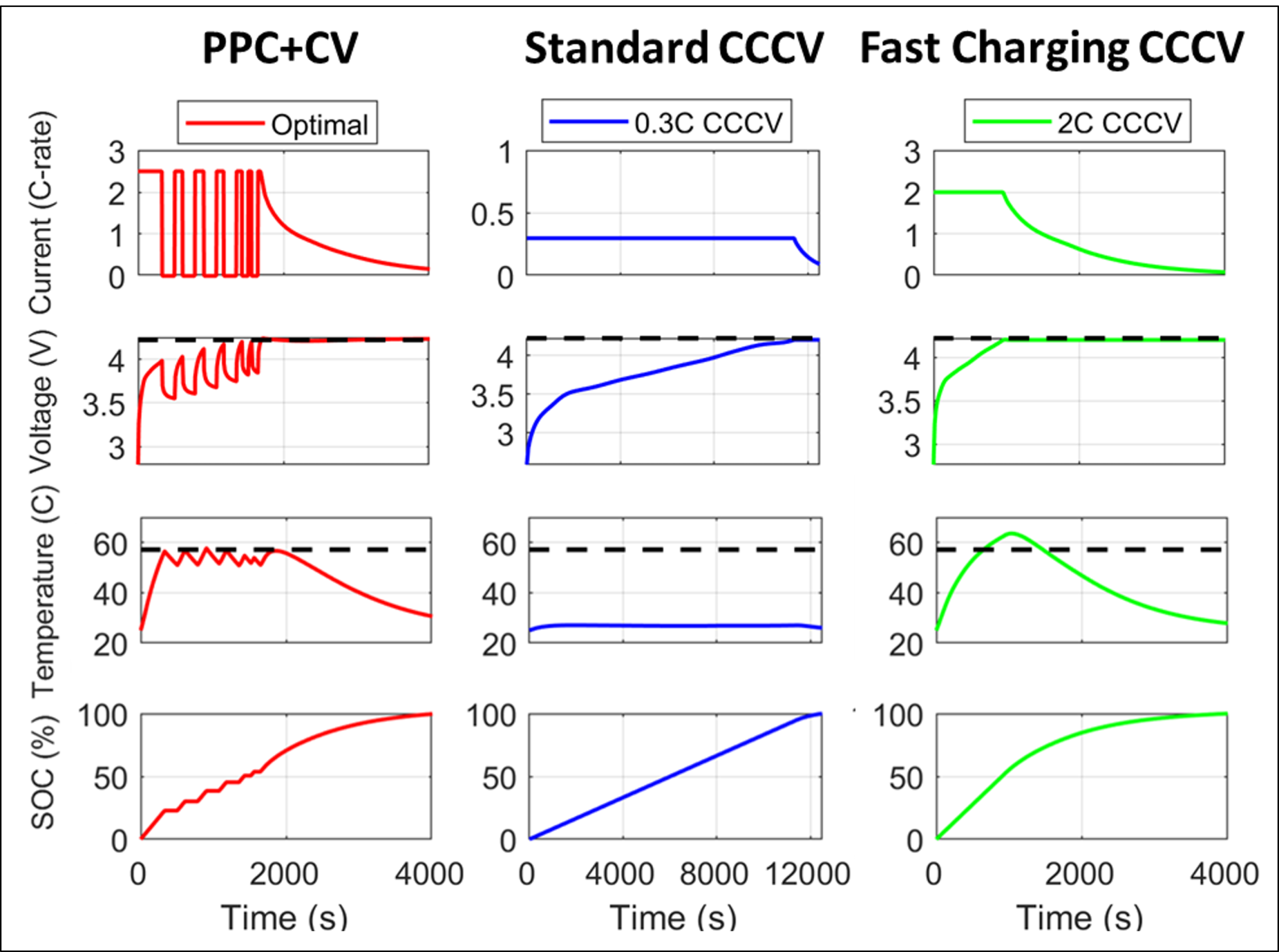Renato presented at the Electrochemical Society, Pacific Rim Meeting (PRiME) 2024.
Title: Learning-Based Fast Charging of Li-Ion Batteries
Abstract:
This paper presents an aggressive charging strategy for Lithium-ion batteries (LiBs) while maximizing their life using an adaptive control strategy and a physics-inspired, data-driven model. With the increased presence of Lithium-ion batteries in critical applications, there is a demand for advanced fast-charging strategies to reduce the charging time while maximizing the battery’s lifespan. Several factors, such as elevated temperature, limit fast charging. Elevated temperature accelerates electrochemical aging, which in turn results in increased lithium plating, higher mechanical stresses, and an increased growth rate of the solid-electrolyte interface layer. The fast charging problem has been explored through passive and optimal charging strategies, such as constant-current constant-voltage (CCCV) and model predictive control (MPC). The optimal charging variants allow for formulating a closed-loop optimization problem to minimize charging time and can more naturally include physics-based constraints. However, the efficacy of real-time implementations is hampered by model inaccuracies stemming from streamlined battery dynamics that fail to exploit the system’s capabilities, potentially resulting in conservative or infeasible solutions. Furthermore, MPC strategies that employ electrochemical models for improved estimation of the battery states exhibit considerable computational complexity, limiting their application.
Here, we propose an efficient and fast charging strategy for Li-ion batteries via learning and optimization. This strategy substitutes the complex mechanistic model with a fast and control-oriented data-driven LiB model. Unlike mechanistic models, data-driven models offer accurate representations of system dynamics without relying on in-situ measurements and proprietary information. However, these models may perform poorly in unseen scenarios due to overfitting training data, which is typical. We developed a physics-inspired, data-driven approach to determine LiBs governing equations based on their electrochemistry rather than generic terms. We employ a sparse identification method achieved through sequential thresholding ridge regression to construct a nonlinear model from battery measurements, including electrical current (excitation input), voltage, and temperature. We formulate the problem to optimize the sparsification parameters as hyperparameters and minimize a cost function comprised of training and validation sets and the number of terms as a measure of complexity. Furthermore, we evaluate the identified model’s performance in unseen scenarios with the urban dynamometer driving schedule (UDDS) data, where a root mean square error of 1.26e-2 was achieved for SOC prediction, showcasing the model’s adaptability to new conditions.
The optimal charging strategy is developed using an adaptive control scheme that learns the closed-loop system’s Jacobian from input/output data and optimizes the response based on the learned dynamics. Here, we employ the data-driven LiB model to generate input/output data, leveraging its high accuracy and low complexity. The electrical current is optimized for minimum battery charge time while respecting constraints such as maximum cell temperature and voltage to avoid subjecting the cell to accelerated aging. Our optimized charging strategy is comprised of a hybrid (mixed continuous-discrete) solution that fully charges a 5Ah 21700 NMC-811 cylindrical cell, 66% faster than the recommended 0.3C constant-current constant-voltage strategy while respecting safety constraints, including a maximum voltage of 4.2V and a maximum temperature of 57 C corresponding to 90% of the maximum allowable surface temperature. We further tested our results against a fast-charging CCCV protocol with a maximum current of 2C rate. Under similar conditions, this strategy experienced upwards of 12% higher temperatures than our proposed charging strategy (similar charging time), reaching an excess of 64 C (compared to 57 C), which can result in significant damage to the battery’s health. In summary, we present an adaptive data-driven modeling and learning control strategy to keep the temperature within the manufacturer’s recommended range and achieve lower charging time compared to other strategies.
